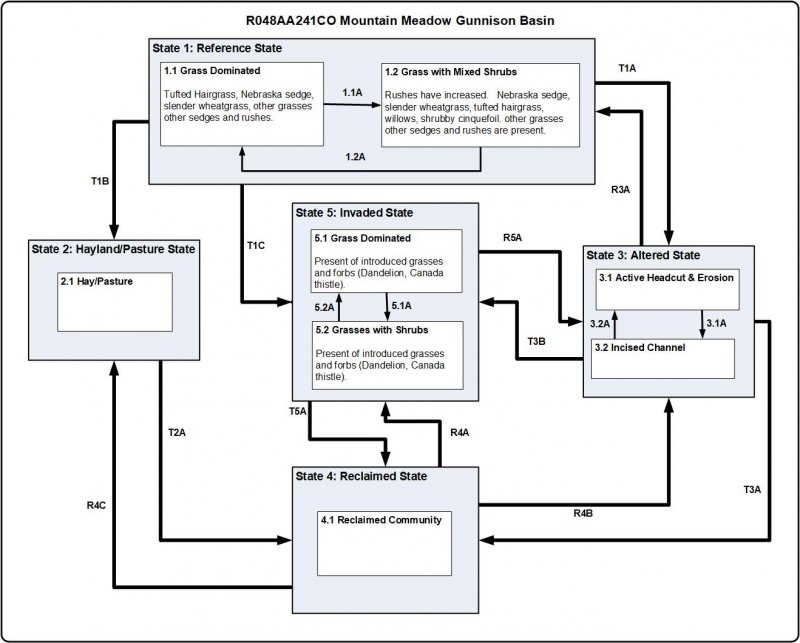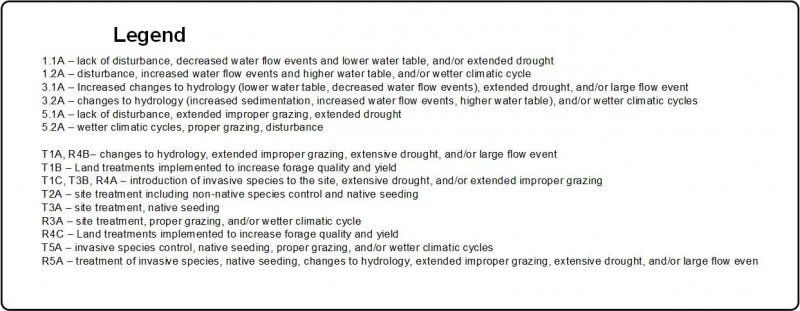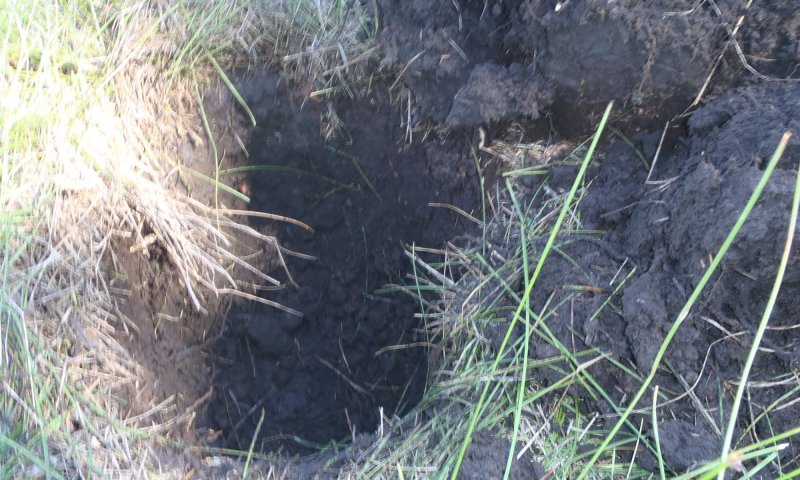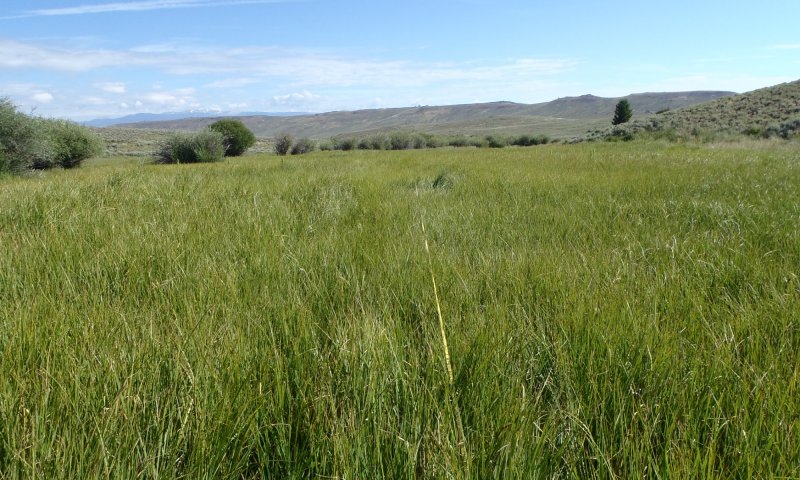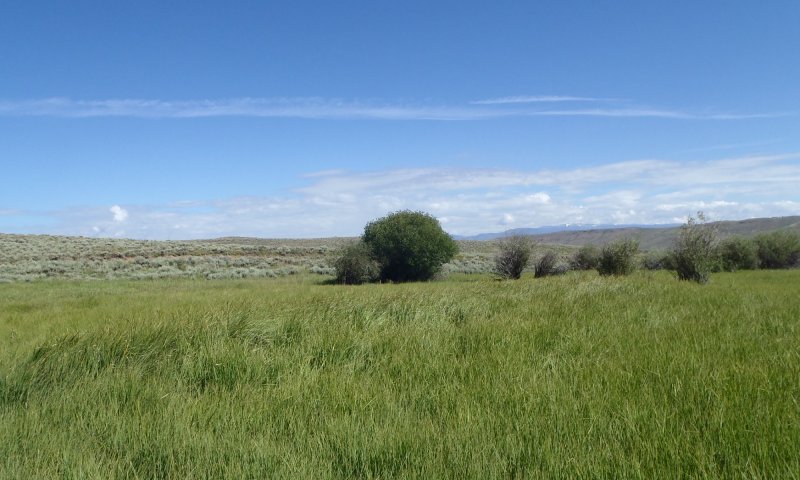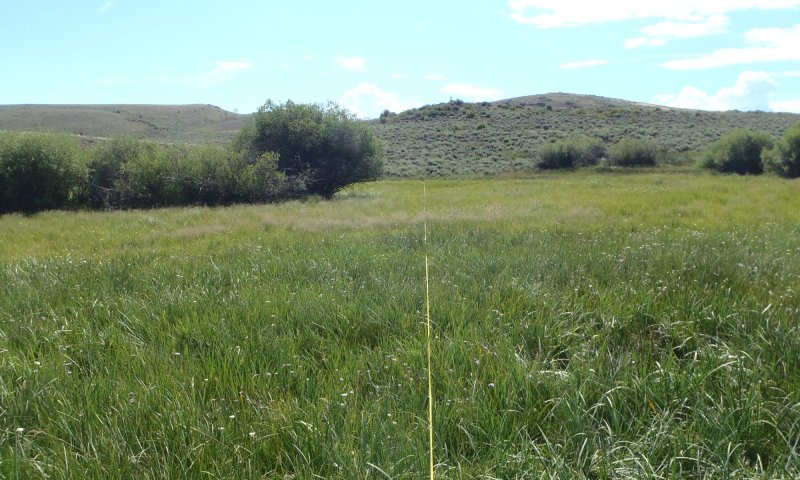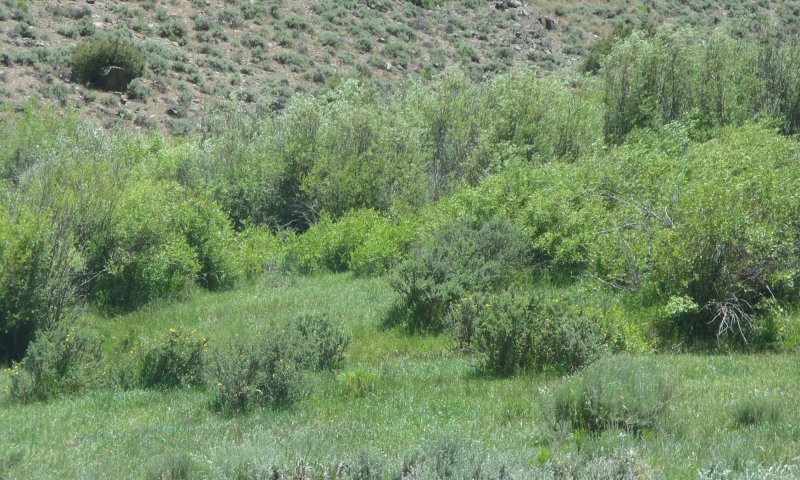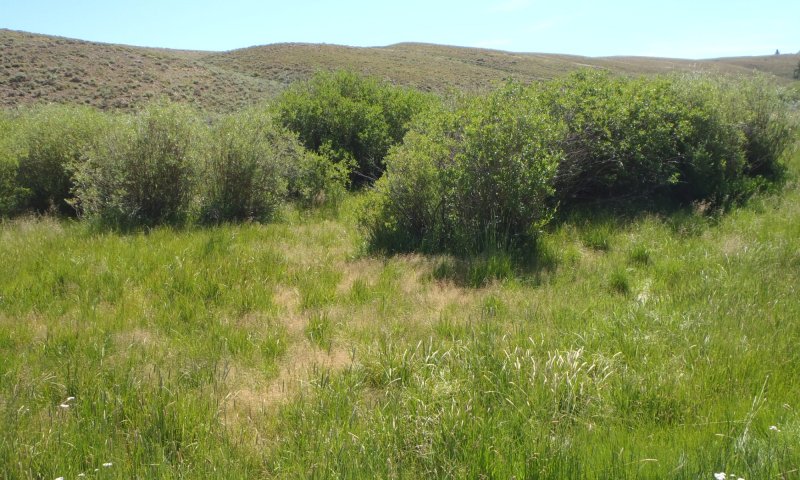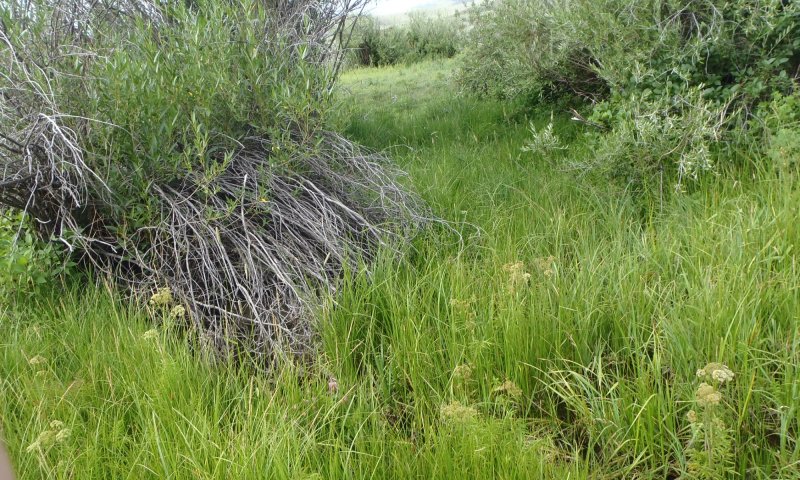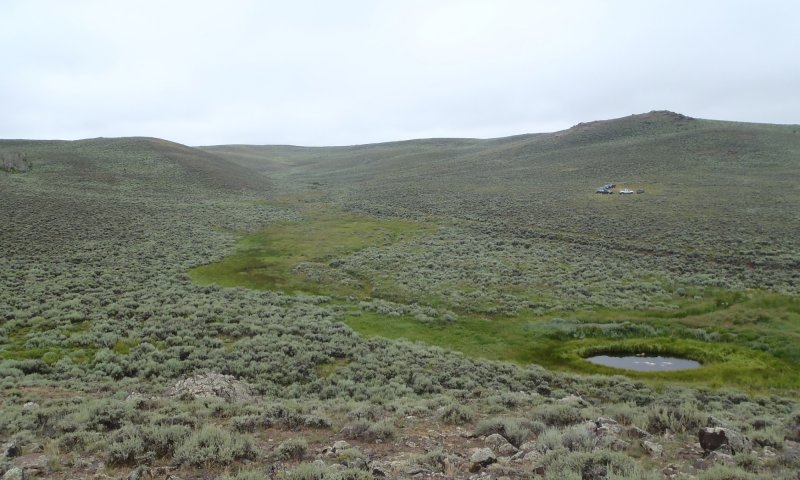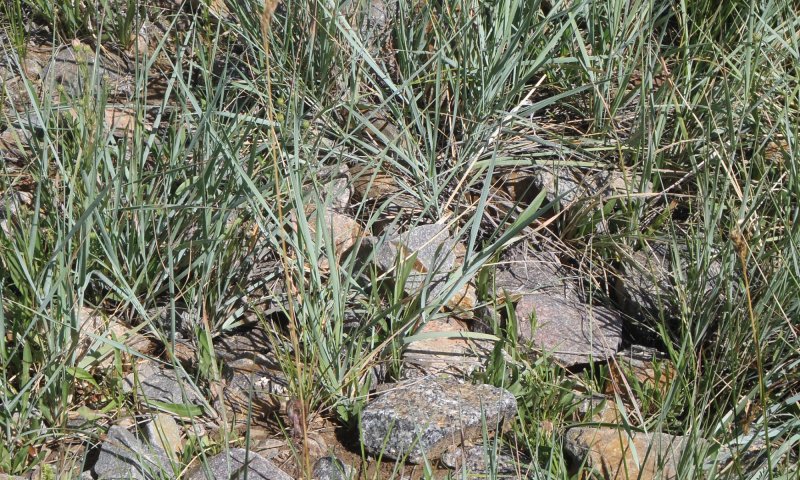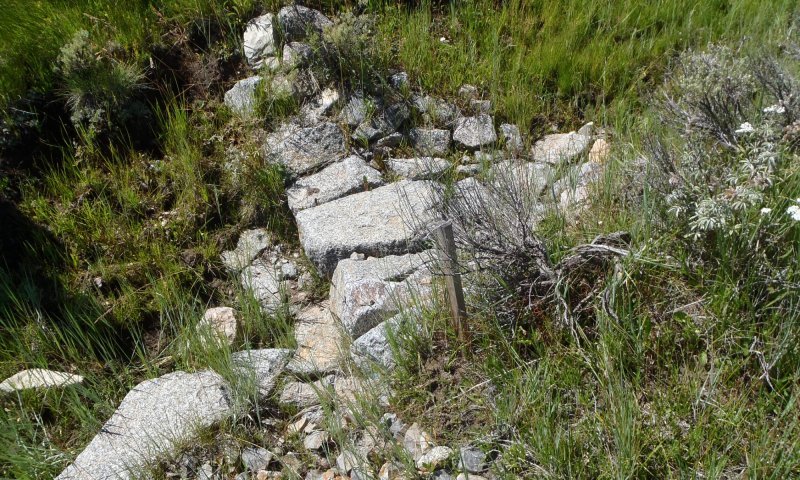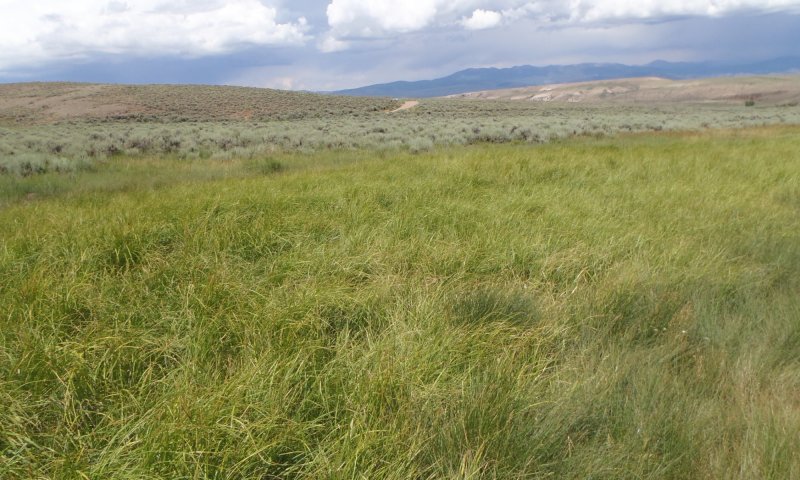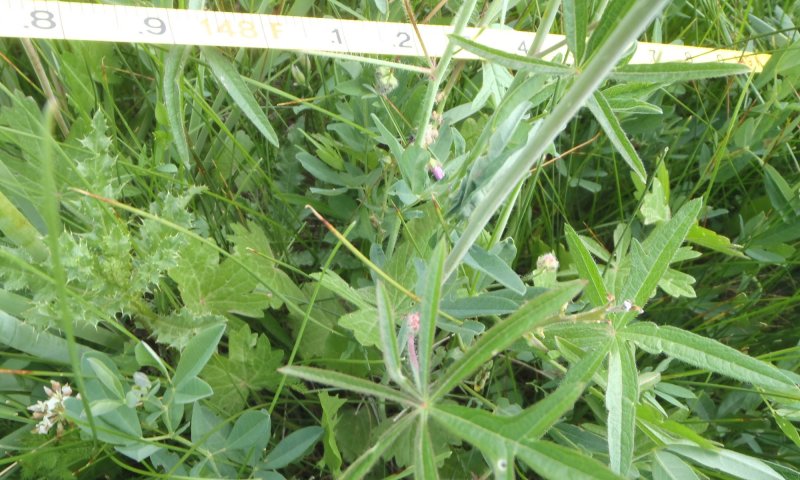

Natural Resources
Conservation Service
Ecological site R048AA241CO
Mountain Meadow Gunnison Basin LRU
Last updated: 3/05/2024
Accessed: 11/23/2024
General information
Provisional. A provisional ecological site description has undergone quality control and quality assurance review. It contains a working state and transition model and enough information to identify the ecological site.
MLRA notes
Major Land Resource Area (MLRA): 048A–Southern Rocky Mountains
MLRA 48A makes up about 45,920 square miles (119 000 square kilometers). It is in the Southern Rocky Mountains province, which is east of the Colorado Plateau, south of the Wyoming Basin, west of the Great Plains, and north of the Rio Grande rift. MLRA 48A is in western and central Colorado, southeastern Wyoming, eastern Utah, and northern New Mexico. The headwaters of major rivers, including the Colorado, Yampa, Arkansas, Rio Grande, North Platte, and South Platte Rivers are in this MLRA. It has numerous national forests, including the Medicine Bow National Forest in Wyoming; the Routt, Arapaho, Roosevelt, Pike, San Isabel, White River, Gunnison, Grand Mesa, Uncompahgre, Rio Grande, and San Juan National Forests in Colorado; and the Carson National Forest and part of the Santa Fe National Forest in New Mexico. Rocky Mountain National Park also is in this MLRA.
MLRA 48A is in the southern Rocky Mountains physiographic region. The Southern Rocky Mountains consist primarily of two belts of strongly sloping to precipitous mountain ranges trending north to south. Several basins, or parks, are between the belts. Some high mesas and plateaus are included. The mountains were uplifted during the Laramide orogeny and then were subject to periods of glaciation. The ranges include the Sangre de Cristo Mountains, Laramie Mountains, and Front Range in the east and the San Juan Mountains and Sawatch and Park Ranges in the west. The ranges are dissected by many narrow stream valleys that have steep gradients. In some areas, the upper mountain slopes and broad crests are covered by snowfields and glaciers. Elevation of the MLRA typically is 6,500 to 14,400 feet (1980 to 4390 meters). The part of the MLRA in central Colorado includes the highest point in the Rocky Mountains, Mount Elbert, which reaches an elevation of 14,433 feet (4400 meters). More than 50 peaks in this part of the MLRA are at an elevation of more than 14,000 feet (4270 meters). Many small glacial lakes are in the high mountains.
The mountains in this MLRA were formed mainly by crustal uplifts during the late Cretaceous and early Tertiary periods. This large MLRA can be subdivided into at least four general divisions. The first division includes the Rocky Mountains in the eastern part of this area, called the Front Range. This range is a fault block that has been tilted on edge and uplifted and is dominantly igneous and metamorphic rock. It was tilted on the east edge, so a steep front is on the east side and more gentle slopes are on the west side. In the southeast part, the exposed rock is mostly Precambrian igneous and metamorphic. The second division is the tertiary rock, primarily basalt and andesitic lava flows, tuff, breccia, and conglomerate, throughout the San Juan Mountains area. The third division is the northwest part of the MLRA, which is dominantly sedimentary rock from the Cretaceous and Tertiary periods and the Permian and Pennsylvanian periods. The fourth division is the long, narrow Sangre de Cristo Mountains uplifted during the Cenozoic era between the Rio Grande rift and the Great Plains. Many of the highest mountain ranges were reshaped by glaciation during the Pleistocene. Alluvial fans at the base of the mountains are recharge zones for local basin and valley-fill aquifers and are an important source of sand and gravel.
The average annual precipitation is dominantly 12 to 63 inches. Summer rainfall commonly occurs as high-intensity, convective thunderstorms. About one-half of the annual precipitation is received as snow in winter; the proportion increases as elevation increases. In the mountains, deep snowpack accumulates in winter and generally persists until spring or early in summer, depending on elevation. Some permanent snowfields and small glaciers are on the highest mountain peaks. In the valleys at the lower elevations, snowfall is lighter and snowpack may be intermittent. The average annual temperature is 26 to 54 degrees F (-3 to 12 degrees C). The freeze-free period averages 135 days, but it ranges from 45 to 230 days, decreasing in length as elevation increases. The climate of this MLRA varies according to the elevation. Precipitation is higher and temperatures are cooler at the higher elevations. The plant communities vary according to elevation, aspect, and latitude due to variations in the kind and timing of the precipitation and the temperature.
The dominant soil orders in this MLRA are Mollisols, Alfisols, Inceptisols, and Entisols. The soils in the area dominantly have a frigid or cryic soil temperature regime and an ustic or udic soil moisture regime. Mineralogy typically is mixed, smectitic, or paramicaceous. In areas of granite, gneiss, and schist bedrock, Glossocryalfs (Seitz, Granile, and Leadville series) and Haplocryolls (Rogert series) formed in colluvium on the mountain slopes and Dystrocryepts (Leighcan and Mummy series) formed on mountain slopes and summits at the higher elevations. In areas of andesite and rhyolite bedrock, Dystrocryepts (Endlich and Whitecross series) formed in colluvium on the mountain slopes. In areas of sedimentary bedrock, Haplustolls (Towave series) formed on the mountain slopes at low elevations that receive a low amount of precipitation. Haplocryolls (Lamphier and Razorba series), Argicryolls (Cochetopa series), and Haplocryalfs (Needleton series) formed in colluvium on the mountain slopes at high elevations.
LRU notes
This site occurs only in the Gunnison Basin Land Resource Unit. The Gunnison Basin is a valley with hills that occurs along the frigid/cryic temperature break and the aridic bordering on ustic/typic ustic climate break. Gunnison Basin has 5 dominant ecological sites.
The lower elevations are in the dry mountain ecological site climate zone and the upper elevations are in the mountain ecological site climate zone. Aspect and wind directions further complicates where plant communities occur in the basin. Southern aspects tend to be dry and warmer and Dry Mountain Loam (R048AA231CO) usually can be found on these aspects at middle elevations in the basin. Mountain Loam (R048AA228CO) occurs on the Northern and eastern aspects and depression areas were the wind blows the snow too. Thus, creating a higher effective precipitation at lower and middle elevations in the Basin. Dry exposure (R048AA235CO) is found on the southern most aspects and landscape positions where it is windswept from moisture that is received. Mountain Swale and Mountain Meadows occur in the draws where the snow is deposited during the winter. Mountain Swale (R048AY245CO) received extra water only during snow melt and large precipitation events. Mountain Meadows (R048AA241CO) has a water table year-round.
Classification relationships
Natural Resources Conservation Service (NRCS):
Major Land Resource Area 48A, Southern Rocky Mountains (USDA-NRCS, 2006).
U.S. Forest Service (USFS):
M331G – South-Central Highlands Section Southern Rocky Mountain Steppe - Open Woodland - Coniferous Forest - Alpine Meadow
M331H – North-Central Highlands and Rocky Mountain Section Southern Rocky Mountain Steppe - Open Woodland - Coniferous Forest - Alpine Meadow
M331I – Northern Parks and Ranges Section Southern Rocky Mountain Steppe - Open Woodland - Coniferous Forest - Alpine Meadow
Environmental Protection Agency (EPA):
21b–Crystalline Subalpine Forests, 21c–Crystalline Mid-Elevations Forests, 21d–Foothill Shrublands, 21f–Sedimentary Mid-Elevation Forests, and 21h–Volcanic Mid-Elevation Forests < 21 Southern Rockies < 6.2 Western Cordillera < 6 Northwestern Forested Mountains North American Deserts (Griffith, 2006).
U.S. Geological Survey (USGS):
Southern Rocky Mountain Province
Ecological site concept
This site is in flood plains on drainageways, floodplains, depressions, stream terraces, and the bottom of narrow, winding valleys along intermittent streams. Site has a water table year round. Soils are deep to very deep, very dark colored, highly organic, poorly to very poorly drained, and typically acid in reaction.
Associated sites
| R048AA235CO |
Dry Exposure Gunnison Basin LRU Dry Exposure Loam occurs mainly ridgetops, hills, and hillsides. Slopes average between 5 and 45%. Soils are shallow (10-20 inches); loamy soils derived from slope alluvium derived from rhyolite and/or or residuum from granite, gneiss, or rhyolite. Surface textures are gravelly loam with loamy subsurface with an average of 20-30% clay. It is a Black Sagebrush – Muttongrass - Squirreltail community. It has an aridic ustic moisture regime. The effective precipitation ranges from 12 to 16 inches. |
|---|---|
| R048AA245CO |
Mountain Swale Gunnison Basin LRU Mountain Swale occurs mainly swales, flood plains or drainageways. Slopes average between 1 and 15%. This is a run-in site which after large precipitation events or during spring snowmelt, water may flow in channels for short periods. Normally, water spreads out across the site rather than flowing in channels. If a water table is present is it greater than 60 inches during the growing season. Soils are deep to very deep (40-60+ inches); fine-loamy soils derived from alluvium derived from igneous, metamorphic, and sedimentary rock. Surface textures are loam, sandy loam, or silt loam with a loamy subsurface. It is a basin wildrye-slender wheatgrass-Wood’s Rose community. It has an aridic ustic or typic ustic moisture regime. The effective precipitation ranges from 12 to 20 inches. |
| R048AA231CO |
Dry Mountain Loam Gunnison Basin LRU Dry Mountain Loam occurs mainly hillsides. Slopes average between 5 and 25% but can range up to 45% in some areas. Soils are moderately deep (20-40 inches); fine-loamy soils derived from slope alluvium derived from rhyolite and/or sedimentary rock or residuum from granite and rhyolite. Surface textures are fine sandy loam or gravelly sandy loam with loamy subsurface with an average of 20-30% clay. It is a Wyoming Big Sagebrush - Indian Ricegrass community. It has an aridic ustic moisture regime. The effective precipitation ranges from 12 to 16 inches. |
| R048AA228CO |
Mountain Loam Gunnison Basin LRU Mountain Loam occurs mainly hills, hillsides, mountainside, or mountain slopes. Slopes average between 3 and 25% but can range up to 45% in some areas. Soils are moderately deep to deep (20-60+ inches); fine-loamy soils derived from colluvium derived from rhyolite; slopes alluvium derived from rhyolite; colluvium derived from volcanic and sedimentary rock or igneous and metamorphic rock; residuum weathered from schist; or old alluvium derived from basalt and/or glacial till from basalt. Surface textures are loam, sandy loam, gravelly sandy loam, or sandy clay loam with subsurface clay content ranging from 25 to 45% clay. It is a Mountain Big Sagebrush - Arizona Fescue-needlegrass community. It has a typic ustic moisture regime. The effective precipitation ranges from 16 to 20 inches. |
Similar sites
| R048AY245CO |
Mountain Swale Mountain Swale occurs flood plains, alluvial fans, swales, stream terraces, and valley floors. Slopes is between 0 to 12%. Soils are deep (60+ inches) in depth. Soils are derived from alluvium. Soil surface texture is loam, with a fine-loamy subsurface. It is a basin wildrye-western wheatgrass community. It has a typic ustic moisture. The effective precipitation ranges from 16 to 20 inches. It receives extra moisture from surrounding uplands that drain into the area. These areas are sloped themselves and drain into perennially wet areas. They have well drained soils and ephemeral streams. This site is the generic site written before Land Resource Unit (LRU) level ecological sites. |
|---|---|
| R048AY241CO |
Mountain Meadow Mountain Meadow occurs on floodplains, flood-plain steps, valley floors, drainageways and low terraces. This site has natural sub-irrigation. Slopes is between 0 to 15%. Soils are moderately deep to very deep (20 to 60+ inches). Soils are derived from alluvium from sandstone and shale, sedimentary rock, igneous, metamorphic and sedimentary rock, or shale. Soil surface texture is loam, sandy loam, sandy clay loam or clay loam with fine-loamy textured subsurface. It has a typic aquic or oxyaquic ustic moisture regime. The effective precipitation ranges from 16 to 20 inches. This site is the generic site written before Land Resource Unit (LRU) level ecological sites. |
| R048AA245CO |
Mountain Swale Gunnison Basin LRU Mountain Swale occurs mainly swales, flood plains or drainageways. Slopes average between 1 and 15%. This is a run-in site which after large precipitation events or during spring snowmelt, water may flow in channels for short periods. Normally, water spreads out across the site rather than flowing in channels. If a water table is present is it greater than 60 inches during the growing season. Soils are deep to very deep (40-60+ inches); fine-loamy soils derived from alluvium derived from igneous, metamorphic, and sedimentary rock. Surface textures are loam, sandy loam, or silt loam with a loamy subsurface. It is a basin wildrye-slender wheatgrass-Wood’s Rose community. It has an aridic ustic or typic ustic moisture regime. The effective precipitation ranges from 12 to 20 inches. |
Table 1. Dominant plant species
| Tree |
Not specified |
|---|---|
| Shrub |
(1) Salix |
| Herbaceous |
(1) Deschampsia cespitosa |
Click on box and path labels to scroll to the respective text.
